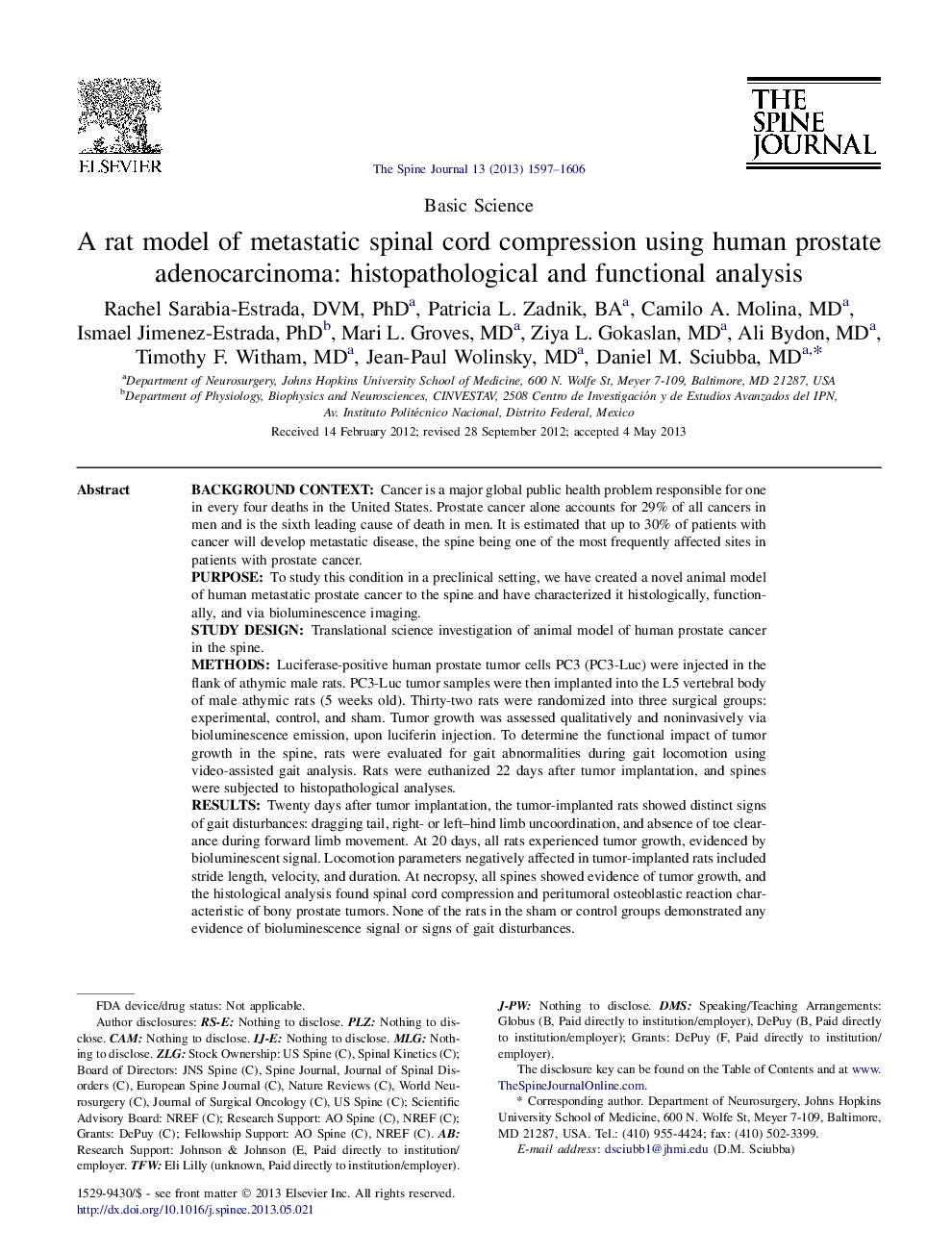| کد مقاله | کد نشریه | سال انتشار | مقاله انگلیسی | نسخه تمام متن |
|---|---|---|---|---|
| 4097379 | 1268589 | 2013 | 10 صفحه PDF | دانلود رایگان |

Background contextCancer is a major global public health problem responsible for one in every four deaths in the United States. Prostate cancer alone accounts for 29% of all cancers in men and is the sixth leading cause of death in men. It is estimated that up to 30% of patients with cancer will develop metastatic disease, the spine being one of the most frequently affected sites in patients with prostate cancer.PurposeTo study this condition in a preclinical setting, we have created a novel animal model of human metastatic prostate cancer to the spine and have characterized it histologically, functionally, and via bioluminescence imaging.Study designTranslational science investigation of animal model of human prostate cancer in the spine.MethodsLuciferase-positive human prostate tumor cells PC3 (PC3-Luc) were injected in the flank of athymic male rats. PC3-Luc tumor samples were then implanted into the L5 vertebral body of male athymic rats (5 weeks old). Thirty-two rats were randomized into three surgical groups: experimental, control, and sham. Tumor growth was assessed qualitatively and noninvasively via bioluminescence emission, upon luciferin injection. To determine the functional impact of tumor growth in the spine, rats were evaluated for gait abnormalities during gait locomotion using video-assisted gait analysis. Rats were euthanized 22 days after tumor implantation, and spines were subjected to histopathological analyses.ResultsTwenty days after tumor implantation, the tumor-implanted rats showed distinct signs of gait disturbances: dragging tail, right- or left–hind limb uncoordination, and absence of toe clearance during forward limb movement. At 20 days, all rats experienced tumor growth, evidenced by bioluminescent signal. Locomotion parameters negatively affected in tumor-implanted rats included stride length, velocity, and duration. At necropsy, all spines showed evidence of tumor growth, and the histological analysis found spinal cord compression and peritumoral osteoblastic reaction characteristic of bony prostate tumors. None of the rats in the sham or control groups demonstrated any evidence of bioluminescence signal or signs of gait disturbances.ConclusionsIn this project, we have developed a novel animal model of metastatic spine cancer using human prostate cancer cells. Tumor growth, evaluated via bioluminescence and corroborated by histopathological analyses, affected hind limb locomotion in ways that mimic motor deficits present in humans afflicted with metastatic spine disease. Our model represents a reliable method to evaluate the experimental therapeutic approaches of human tumors of the spine in animals. Gait locomotion and bioluminescence analyses can be used as surrogate noninvasive methods to evaluate tumor growth in this model.
Journal: The Spine Journal - Volume 13, Issue 11, November 2013, Pages 1597–1606